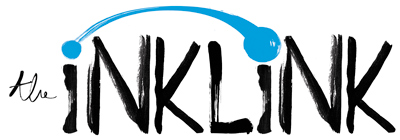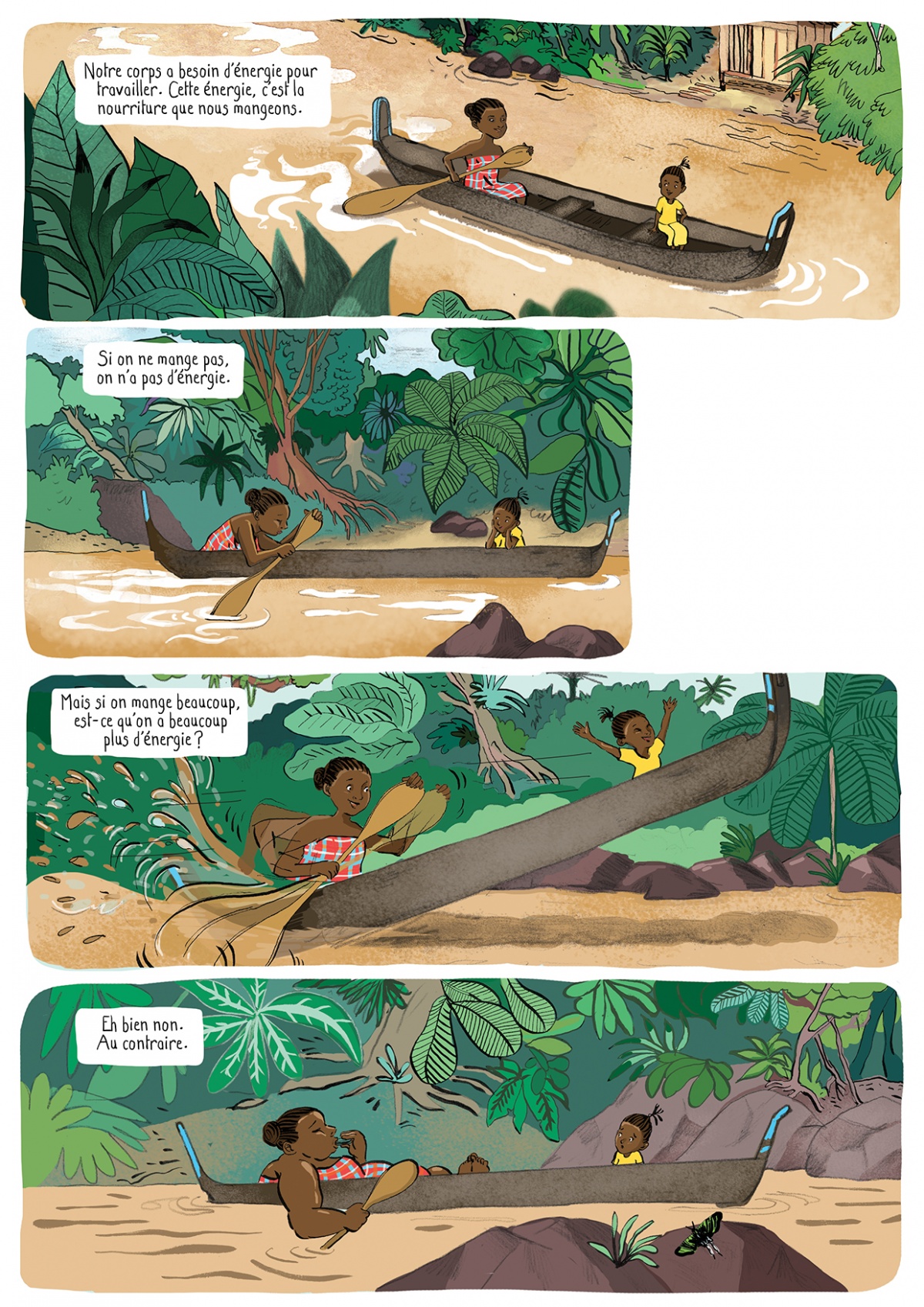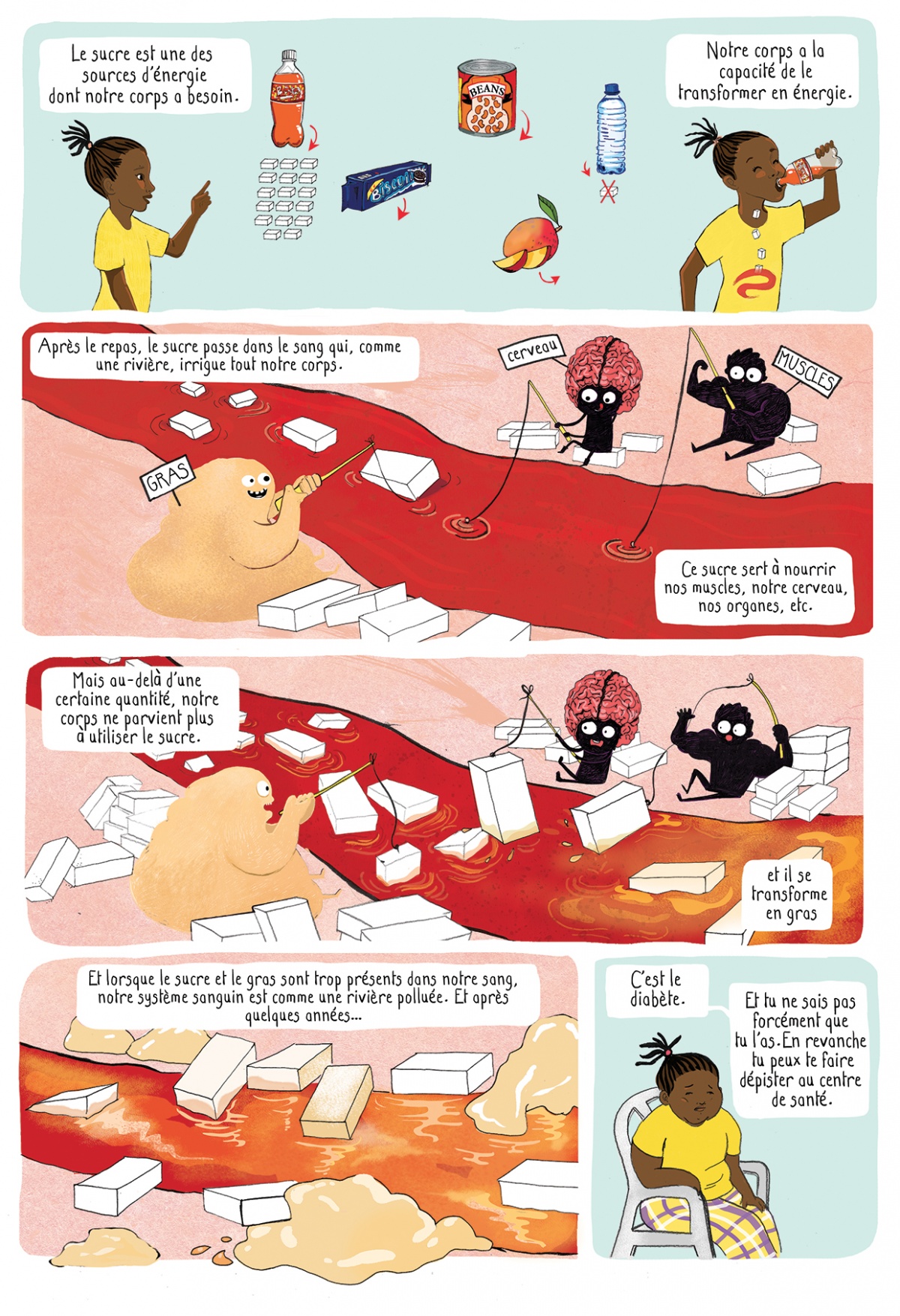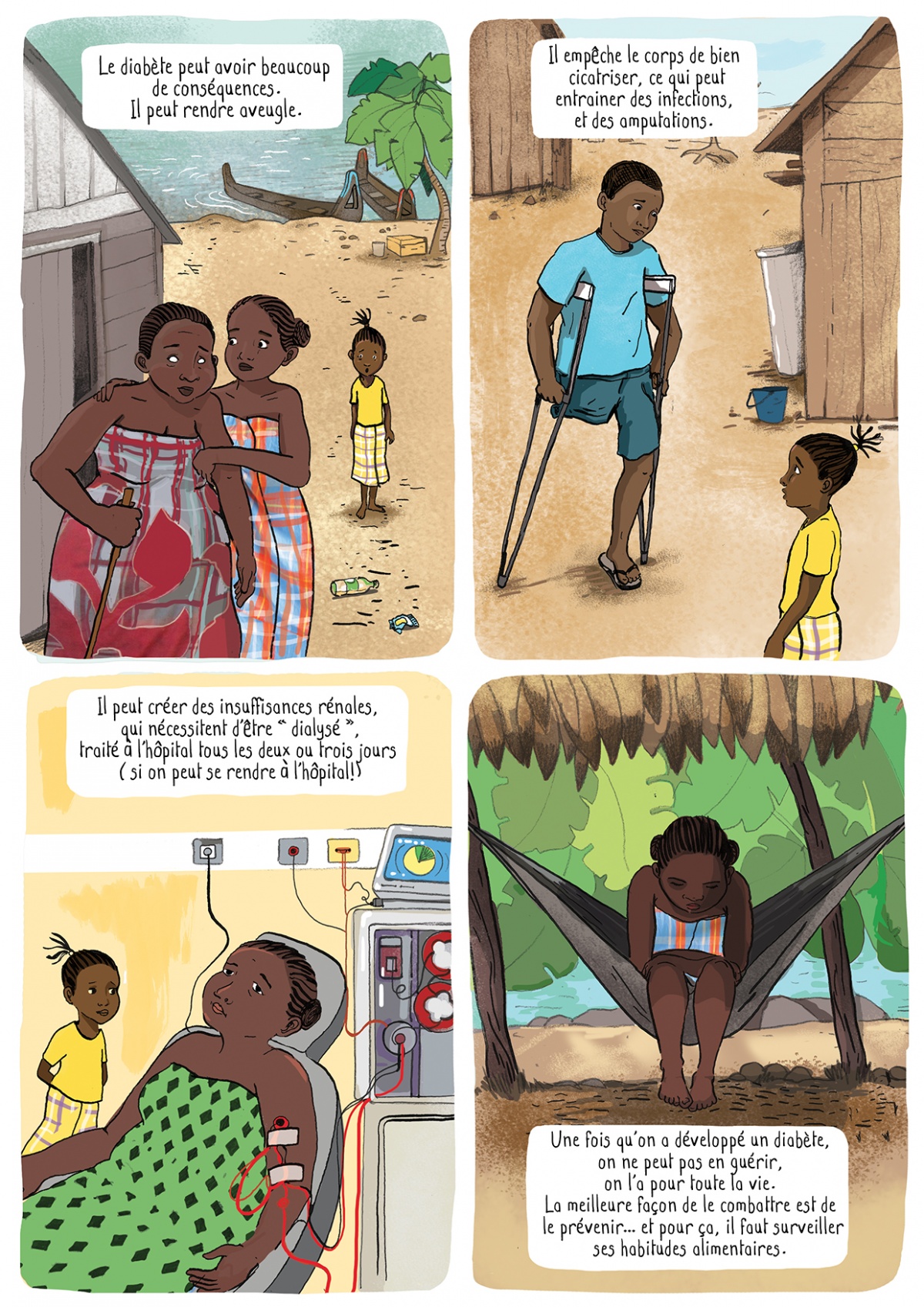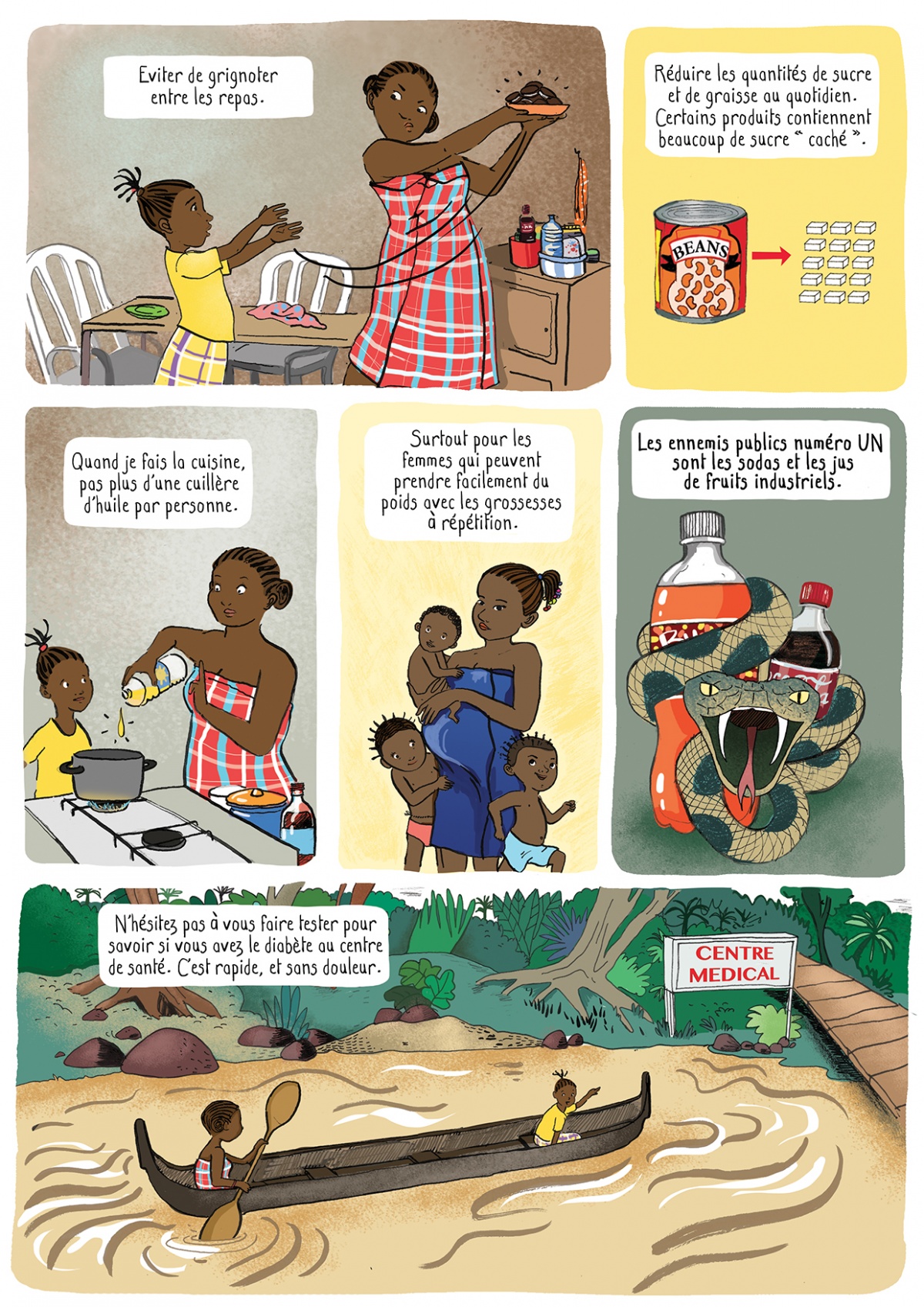Raising diabetes awareness in Suriname and French Guiana
The origin of the project
This mission was one of the trial projects that enabled The Ink Link to be created in 2016. When Laure Garancher went into the field on a health mission for WHO, local people were quick to express their dissatisfaction with awareness campaigns that were often not adapted to their culture. The characters didn't look like them, and the themes digressed too far from their real health concerns.
A research project was therefore initiated with several populations to find out their expectations and work as closely as possible with the subjects that preoccupy them. A team was made up: a writer (Wilfrid Lupano), a cartoonist (Mayana Itoïz) chosen for her style, which matched the tastes of the population, and two scientific coordinators (Laure Garancher and Gustavo Bretas). Their aim was to co-create a health promotion tool, directly with the population. The diabetes project was chosen in consultation with the Bushinengé community.
The diabetes problem
In French Guiana and Suriname, the Bushinengé are descendants of slaves who fled from the sugar and coffee plantations before the abolition of slavery. This community, culturally very different from the native populations of Guyana and Suriname, lives mainly on the river banks.
Obesity and diabetes are very common amongst this community. A major risk factor is their diet, with an overconsumption of sodas and very sweet foods. The villages are in the middle of the forest, and the few local stores have a limited choice and often low nutritional quality.
Understanding the effects that excessive sugar consumption can have over time, and the potential risks of complications over the long term, is hard to grasp, as it is spread over many years.
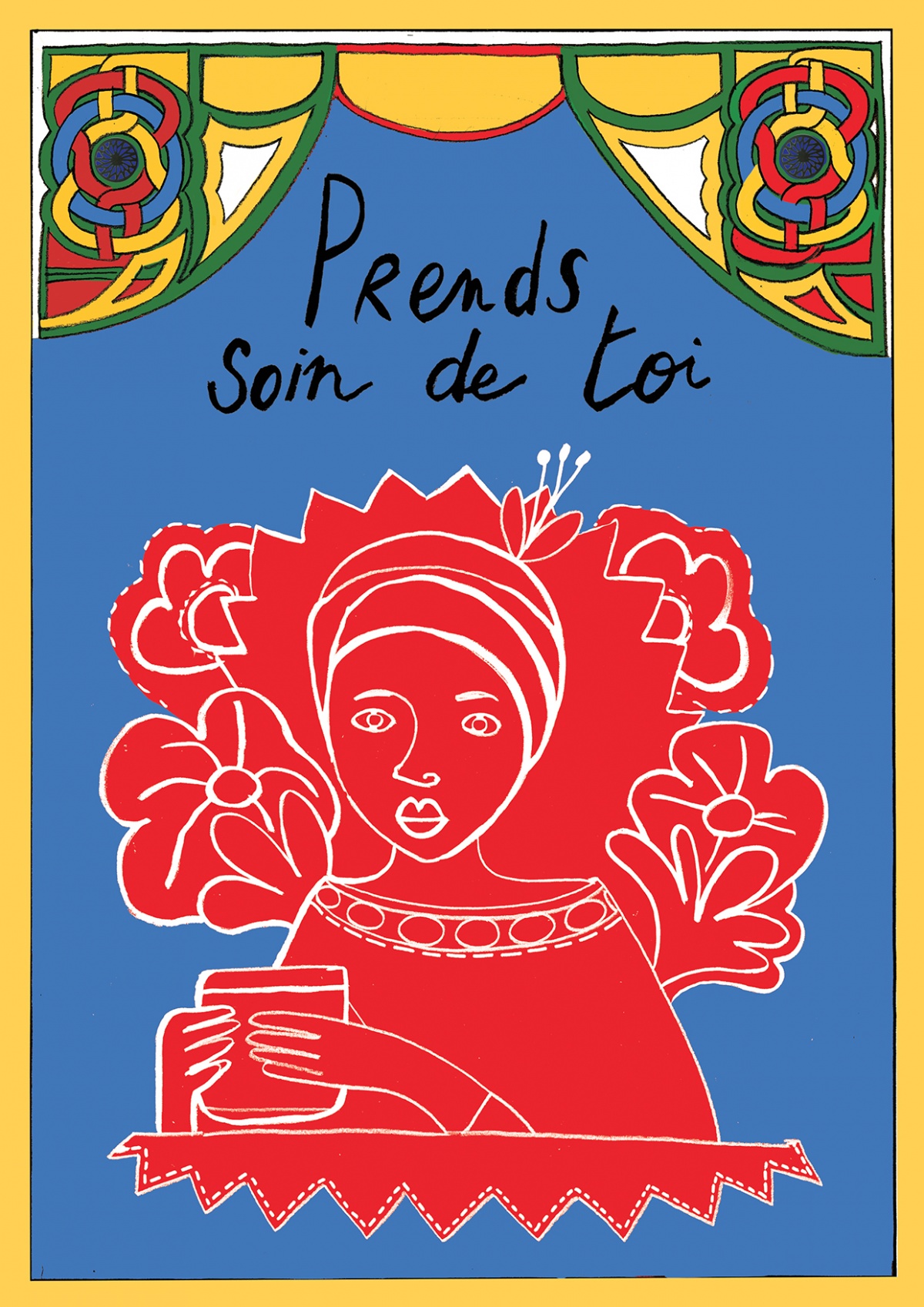
A comic book that speaks to its readers
To help readers understand the importance of reducing sugar consumption, The Ink Link decided to use the metaphor of polluted rivers, a meaningful theme to the communities living on the river's banks. The challenge was to make people realize that consuming too much sugar today could have serious consequences tomorrow.
Scripted by Wilfrid Lupano and drawn by Mayana Itoïz, the pages were produced on site, to make sure they met with the community's approval. They were then laid out as booklets and posters for the WHO Suriname branch. Given the success of the booklet, it was quickly reproduced in French Guiana and distributed to various health centers. For wider distribution, the comic book is available in both the local language, Djuka, and in French.
What is the impact?
The local people were quick to take on the subject, in order to organize events around the issue of diabetes. Although this trial project is now several years old, the work carried out is still being used by the local people themselves.
Following our project dealing with diabetes in collaboration with local people in Suriname, we were asked to adapt our comic strip into an animated film for wider distribution to a public that had difficulty with the comic strip format.
The animation was provided by Claire Lageyre, an artist specializing in motion design who had already worked on numerous video projects with her agency Mikros Image.
The animated film remains extremely close to the spirit of the comic strip, while adding the dynamics of movement, useful for depicting the river becoming increasingly polluted.
The film will be dubbed in French and translated into Ndyuka, the language of one of Suriname's populations, so that it can be shown even in the most remote regions.
